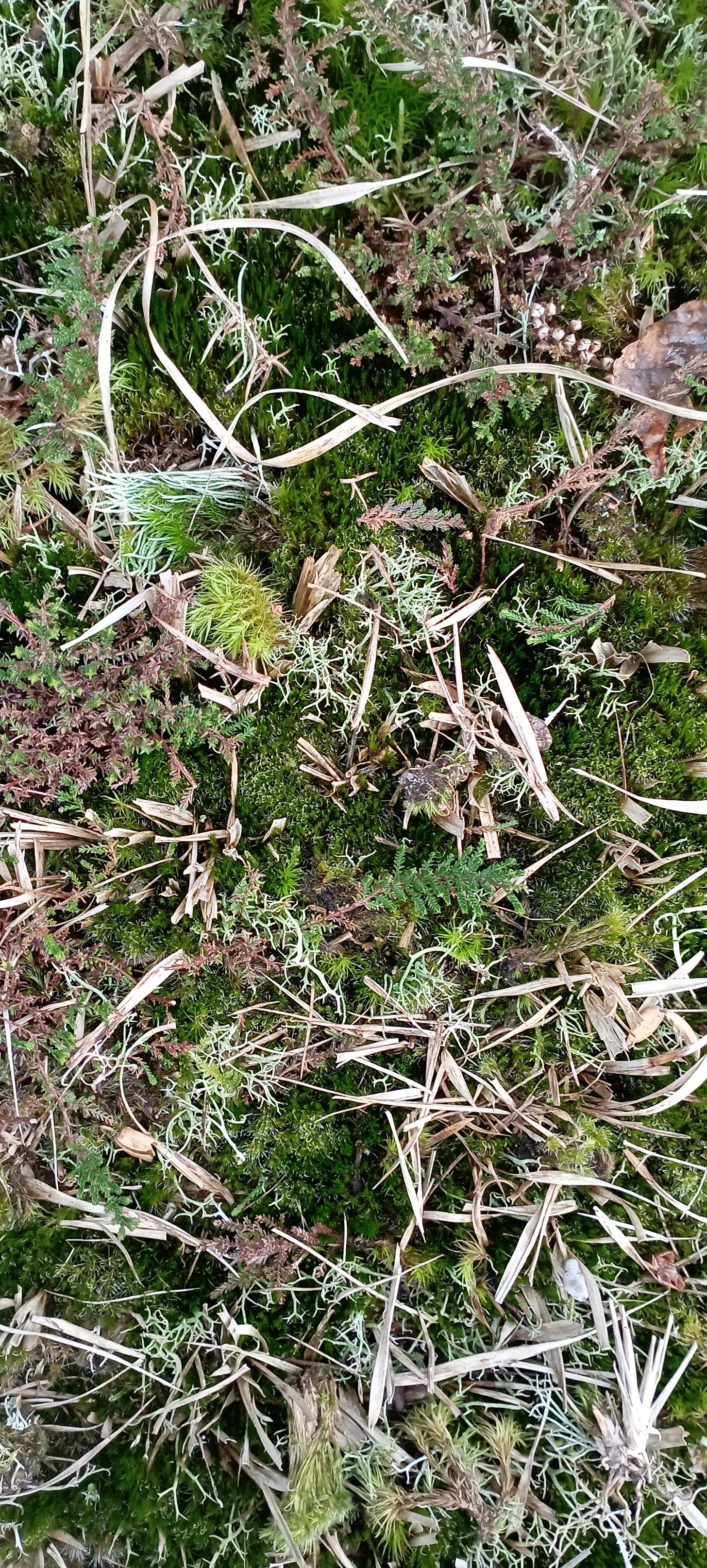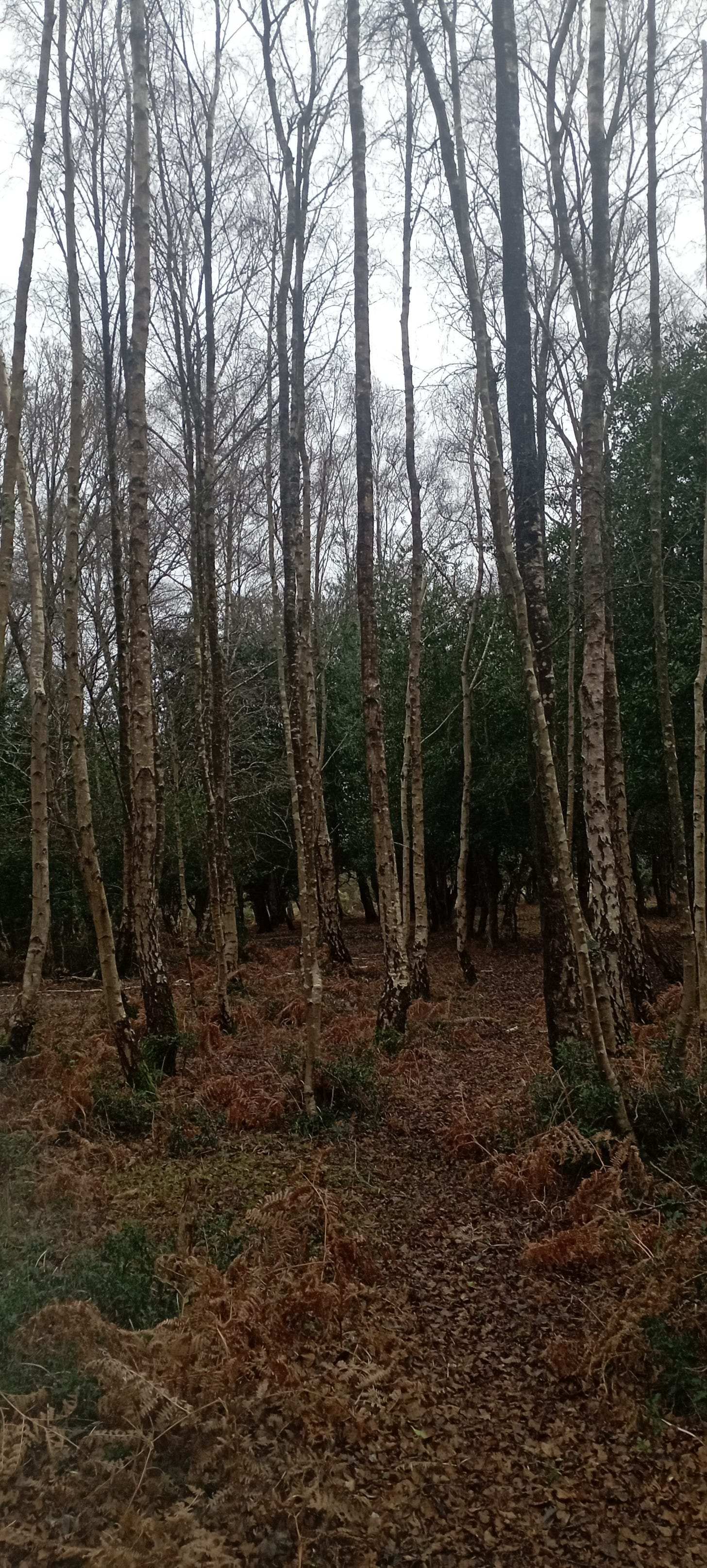This residency is hosted by the Countryside Education Trust in Beaulieu, supported by Artfulscribe and funded by the New Forest National Park Authority’s Sustainable Communities Fund.
I'm writing this blog as we approach the shortest day of the year. Life in the woodland is slowing down, but it has not stopped completely. Birds dart about, chattering and feeding. Clusters of blue tits and marsh tits move through the dark branches; little birds travelling together as one flock. There’s a shuffling and a swooping in the understory, too, where wrens and robins and blackbirds shout to each other - and goldfinches flash yellow in the hedgy margins.
There’s a feeling of movement - not frantic, but definitely purposeful. Many of these birds - the blackbirds and the robins in particular - are likely to be migrants that have come from further North in the country, or even across the sea from mainland Europe in search of food. There are apparently ways of telling them apart - do they have darker beaks? Is the ring around the blackbird’s eye slightly different? It is hard to say in the low light - but there’s certainly a different rhythm to the woods now - one that almost feels like obliging co-operation among species as they reserve their energy for finding food instead of fighting for territory.
But it’s not just the birds that are alive. Working in the woodland is a reminder that the trees are not dead either. At a distance, branches look life leafless stems. But up close, almost all trees have buds on their stems that will become leaves in spring. Beech stems have pointed buds like grass seeds; oaks have clusters like the pads on a paw. And ash buds look like the tiniest deer hooves.
The woods are dormant; not dead.
Dormant: from dormir (Old French) and dormire (Latin) - to sleep
Even in the depths of winter, the world is still moving - breathing - turning - as a creature moves in its sleep.
When you cut into the wood, you notice that it is wet (as it always is), with sap. As the weather grows colder, the sap in deciduous trees flows from their leaves to the roots and heart of the wood. Slicing into the wood brings you even closer to this microscopic movement - when cutting hedges for laying, you have to leave just the right amount of cambium (the layer under the bark) so that the sap can move freely to the whole plant in spring.
Like the migrant birds, the sap has its rhythm. Winter has a pulse; a routine. Even outside of the living creatures, the winter forest moves and shifts. The winter wind changes the shape of the woods overnight; rain turns the ground to mud that every day is trailed with different prints from deer, from people working in the forest.
But the weather is mild this December, as it has often been in recent years. In places, there are even some greenish hazel leaves still clinging to their stems, having somehow avoided the gales that blew over a nearby birch. Elsewhere, I pick up a larch cone that is dry and almost warm to the touch.
Larch, a deciduous conifer
At the edge of the woodland, I take my coat off and stand in the sun. I’m new to this part of the forest, so I’m not sure what the rhythms should be - how each tree behaves; which plants grow first; which birds return each year. But already, I’m aware of the things that are not as they should be - primroses in flower on the track; red admiral butterflies now and again; a bee; clouds of midges along the hedge - and so, my writing can’t help but record this.
For a lot of people, the shortest day brings comfort. Tomorrow, the days will start getting lighter - the world begins turning back towards spring.
But for people who work outdoors, the Winter Solstice is more often a marker of the harsh times yet to come. The weather in January and February and March is colder and harsher. Real winter comes later; when food runs low and the wind blows away the last shelter and animals lose condition.
December is a strange time to be in the woods in the South of England - especially in a changing climate. The rest of the world is filled with images of snow and hibernating creatures - but here we are, without our coats - puzzling over whether the sap has retreated enough to prune the trees, and whether the holly is still putting out new leaves.







